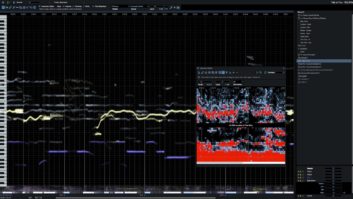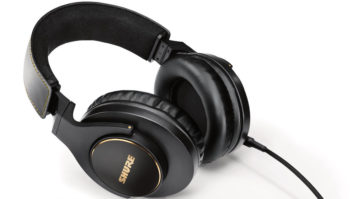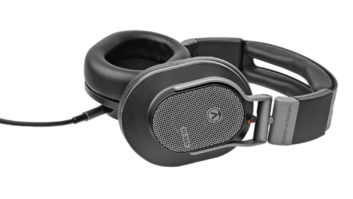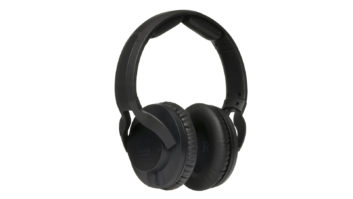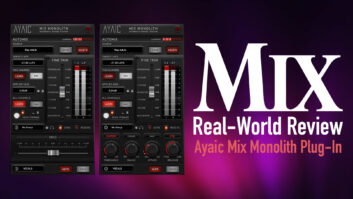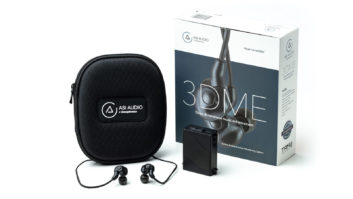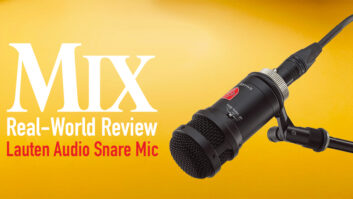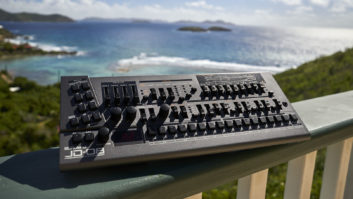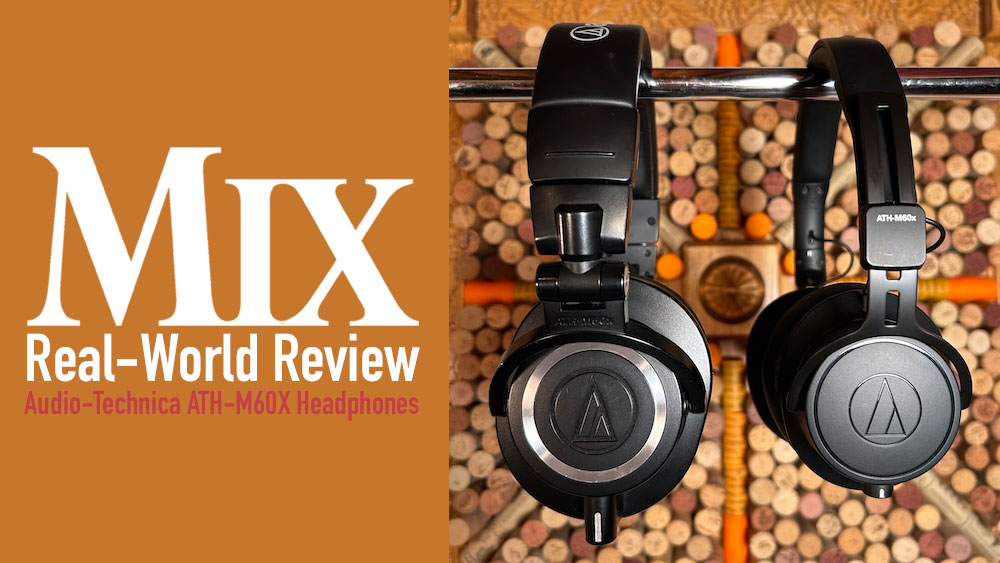
| MIX VERDICT: AUDIO-TECHNICA ATH-M60X HEADPHONES |
| THE TAKEAWAY: “I can heartily recommend the M60X as a very nice ‘gift to self.’” |
| COMPANY: Audio-Technica • www.audio-technica.com PRICE: $219 PROS: • Comfortable design. • Balanced frequency response. • Similar alternative to ATH-M50X. CONS: • Only moderate isolation. • Not very portable. |
I use Audio-Technica ATH-M50X headphones for a lot of different tasks around the studio; the whole band wears them when live tracking, they’re often used for instrumental overdubs and sometimes for vocals, too. I check mixes and even masters on the 50X.
Sure, the frequency response is a little hyped, both top and bottom, but they are super-popular with my clients and other creatives. They’re effectively the closest thing I have to mimicking the end-user listening experience, along, of course, with an iPhone and its AirPods/earbuds.
So I was intrigued when I stumbled upon the Model ATH-M60X at Guitar Center. They’re closed-back and use the same 45mm drivers as found in the 50X, but with a significantly slimmed-down headband, much smaller ear cups, and low-profile ear pads that sit on, instead of around, the ear. I tried them on and then directly compared them to 50X (I love GC’s setup for this), and the differences were major: much lighter, easier on my eyeglass frames, and generally more comfy, even though they stayed put when I tilted my head.
Audio-Technica Launches ATH-ADX3000 Open-Air Headphones
The 60Xs don’t fold up for portability like the 50X, but they do include the carrying pouch, threaded 1/8-inch-to-¼-inch adapter and three detachable cables (long 3.0-meter straight, medium coiled, and short 1.2-meter straight). I’m glad A-T includes all three, as each proves useful at one time or another.
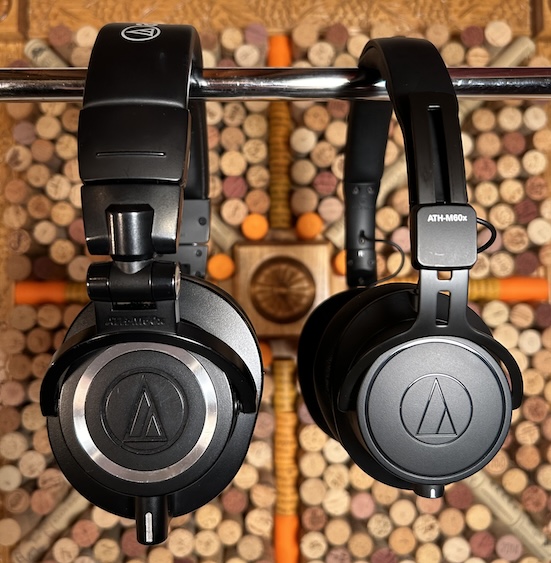
At 38 ohms, they get loud easily, even with weaker headphone amps; they handle up to 1,600 mW of power. Stated frequency response is from 15 Hz to 28 kHz, which is plenty low and amply wide. These specs are all identical to the 50X, although at 7.8 ounces, they are notably lighter than their 10.2-ounce big brother. There is a switchable limiter onboard, but it caps the volume at a rather quiet level, lower than you’ll likely need.
What really sold me on the 60X were the slight sonic differences when compared to the 50X. Unexpectedly, the smaller ear cups and pads create smoother bass response (with more sub-bass, but much flatter response in the upper-bass region), less scooping out of boxy mids, and a taming of that upper-mid harshness of the 50X—while at the same time delivering more detail and excitement. This overall flatter response is still pleasantly plump, while being much more honest with crucial mid-mids and high-mid “presence” definition. The 60Xs are dynamically open, with a strong phantom center and seemingly wider stereo imaging over the 50X. With the smaller cups, of course, the isolation is slightly less.
If you need a fleet of matching cans for clients, at $200/pair these are likely a bit rich, even if that’s truly mid-priced, with a slim design that may or may not hold up to the abuses of studio life. Time will tell.
That being said, they are affordable enough, comfortable enough, truthful enough and beautifully sonically balanced. For you producers and mix engineers out there who are as picky about headphones as I am, I can heartily recommend the M60X as a very nice “gift to self.”
